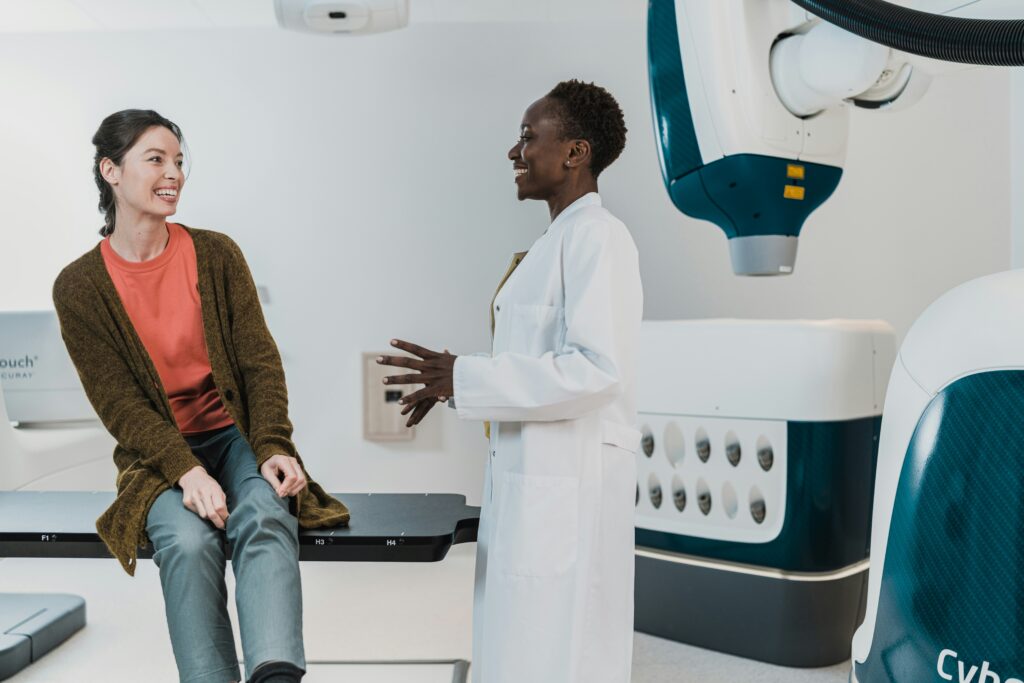
Did you know that cervical cancer is one of the most preventable cancers when caught early? Yet, thousands of women are still affected every year. This January, Cervical Health Awareness Month serves as an important reminder to prioritize your health and take steps to protect yourself.
From understanding the importance of routine Pap smears and HPV testing to recognizing the signs of cervical cancer, knowledge is key to prevention. This month is about empowering women with the information they need to make informed decisions about their health—and encouraging everyone to spread the word about the importance of cervical health.
In this post, we’ll explore how you can prevent cervical cancer, protect your cervical health, and support awareness efforts this month and beyond. Let’s make 2025 a year of health and empowerment for women everywhere.
What is Cervical Health Awareness Month?
Cervical Health Awareness Month, observed every January, is a dedicated time to shine a light on the importance of cervical health and educate women about prevention, early detection, and treatment of cervical cancer. This national campaign is a reminder for women to take charge of their health and prioritize regular screenings like Pap smears and HPV tests, which are vital for detecting cervical cancer in its early, most treatable stages.
Cervical cancer remains one of the most preventable types of cancer, yet thousands of women are diagnosed with it each year. Many cases could be avoided through a combination of vaccination, routine screenings, and awareness of symptoms. By spreading knowledge about these preventative measures, Cervical Health Awareness Month aims to empower women to take proactive steps in protecting their well-being.
This month also serves as a call to action for communities to come together in support of women’s health. Whether it’s scheduling a screening, learning more about cervical health, or encouraging loved ones to prioritize their wellness, small steps can make a big impact.
Cervical Cancer Prevention
Preventing cervical cancer starts with awareness and taking proactive steps to reduce risk. Fortunately, cervical cancer is one of the most preventable types of cancer, thanks to advancements in vaccinations, routine screenings, and healthy lifestyle practices.
The Role of HPV Vaccination
The human papillomavirus (HPV) is the leading cause of cervical cancer, but the good news is that the HPV vaccine can significantly reduce this risk. The vaccine is most effective when administered before exposure to the virus, typically in adolescence, but it’s also beneficial for adults up to age 45 in some cases. By protecting against the strains of HPV most likely to cause cervical cancer, the vaccine is a powerful tool in prevention.
Lifestyle Choices for Cervical Health
Certain lifestyle factors can also play a key role in lowering the risk of cervical cancer:
- Avoiding Smoking: Tobacco use can weaken the immune system, making it harder for the body to fight HPV infections.
- Maintaining a Healthy Diet: A balanced diet rich in fruits and vegetables supports a strong immune system.
- Safe Practices: Using protection during sexual activity reduces the risk of HPV and other infections linked to cervical cancer.
Regular Screenings: The Foundation of Prevention
Routine screenings are crucial in detecting abnormalities before they develop into cancer. Pap smears and HPV tests help identify pre-cancerous changes early, allowing for timely intervention. Women should follow screening guidelines recommended by their healthcare providers based on age and risk factors.
Spreading Awareness
Cervical cancer prevention doesn’t stop with individual efforts. Sharing knowledge about the HPV vaccine, encouraging friends and family to get screened, and participating in awareness campaigns during Cervical Health Awareness Month all contribute to reducing cervical cancer rates and saving lives.
Prevention is powerful, and taking these steps today can lead to a healthier, brighter future.

How to Protect Cervical Health
Taking care of your cervical health is an essential part of overall wellness. Simple, proactive steps can make a big difference in preventing cervical issues and catching potential problems early. Here’s how you can protect your cervical health and stay informed:
Prioritize Routine Screenings
Regular screenings are the cornerstone of cervical health. Pap smears and HPV tests are quick, minimally invasive procedures that detect abnormalities before they develop into cancer.
- Pap Smear: Checks for pre-cancerous changes in cervical cells.
- HPV Test: Detects the presence of the virus most likely to cause cervical cancer.
Healthcare providers recommend starting screenings at age 21 and continuing as advised based on age, medical history, and test results.
Get Vaccinated Against HPV
The HPV vaccine is a proven way to protect against the strains of the virus most commonly linked to cervical cancer. Even if you’ve already been exposed to HPV, the vaccine can still provide protection against other strains. Talk to your healthcare provider to see if the vaccine is right for you.
Practice Healthy Habits
Caring for your overall health also supports cervical wellness:
- Quit Smoking: Tobacco use weakens the immune system, making it harder to clear HPV infections.
- Eat a Nutritious Diet: Foods rich in antioxidants, like leafy greens and berries, help strengthen immune defenses.
- Stay Active: Regular exercise boosts immunity and promotes overall health.
Don’t hesitate to ask your healthcare provider questions about cervical health, screenings, or vaccinations. Knowledge is empowering, and understanding your body helps you make informed decisions.
Be Proactive About Symptoms
While routine screenings are vital, it’s also important to monitor for any unusual changes, like irregular bleeding, pelvic pain, or unusual discharge, and discuss them with your doctor promptly.
Taking these steps not only protects your cervical health but also supports early detection, which can save lives. Cervical Health Awareness Month is the perfect time to take action and encourage others to do the same.
Signs of Cervical Cancer
Cervical cancer is often referred to as a silent disease because it may not show obvious symptoms in its early stages. This is why regular screenings, such as Pap smears and HPV tests, are so important. However, as the disease progresses, certain signs and symptoms may appear. Recognizing these early can make a significant difference in outcomes.
Irregular Vaginal Bleeding
One of the most common signs of cervical cancer is abnormal bleeding. This may include:
- Bleeding between periods.
- Heavier or longer menstrual cycles than usual.
- Bleeding after intercourse or pelvic exams.
- Bleeding after menopause.
Unusual Vaginal Discharge
Discharge that is watery, tinged with blood, or has an unusual odor may indicate an issue. While discharge can vary naturally, significant changes warrant attention.
Pelvic Pain
Persistent pain in the pelvic area, particularly if it’s unrelated to menstruation, could be a warning sign. Pain during intercourse may also indicate a potential problem.
Pain or Difficulty During Urination
If cervical cancer has advanced, it may put pressure on surrounding tissues and organs, leading to discomfort or difficulty while urinating.
Swelling in the Legs
Advanced cervical cancer can block lymphatic flow, leading to swelling in the legs, often accompanied by pain.
It’s important to remember that these symptoms are not exclusive to cervical cancer and can be caused by other conditions. However, if you experience any of these signs, it’s crucial to consult a healthcare professional promptly. Early diagnosis and treatment save lives.
Cervical Health Awareness Month is an opportunity to spread awareness about these symptoms and encourage women to listen to their bodies. Together, we can create a future where more women are empowered to seek care early and take control of their health.

Cervical Cancer Screening
Screening is a vital tool in the fight against cervical cancer. Regular screenings can detect abnormalities early, allowing for prompt treatment and significantly improving outcomes. Here’s what you need to know about cervical cancer screening:
Pap Smear: The Gold Standard
A Pap smear, or Pap test, is designed to detect changes in cervical cells that could indicate pre-cancerous or cancerous conditions.
- Who Should Get a Pap Smear? Women aged 21 to 65 are generally recommended to have a Pap smear every three years. After age 30, women may opt for co-testing (Pap smear and HPV test) every five years if results are normal.
- What to Expect: During the test, a healthcare provider collects a small sample of cells from the cervix. While the procedure might feel slightly uncomfortable, it is quick and minimally invasive.
HPV Testing: Identifying the Cause
HPV testing detects the presence of high-risk HPV strains that are most likely to lead to cervical cancer.
- When to Consider HPV Testing: Often done in conjunction with a Pap smear, particularly for women aged 30 and older, HPV testing can provide additional insights into your risk level.
- Why It Matters: Identifying high-risk HPV strains early can guide further monitoring or treatment.
Screening Guidelines by Age
- Ages 21-29: Pap smear every three years. HPV testing is not typically recommended unless needed to follow up on abnormal Pap smear results.
- Ages 30-65: Pap smear and HPV co-testing every five years, or a Pap smear alone every three years.
- Ages 65 and Older: Screening may no longer be needed if you’ve had regular, normal results in the past decade. Always consult with your healthcare provider for personalized recommendations.
Overcoming Barriers to Screening
Many women delay or skip screenings due to fear, discomfort, or lack of awareness. Cervical Health Awareness Month is a great time to break down these barriers by:
- Normalizing the Conversation: Encourage open discussions about cervical health.
- Offering Support: Help loved ones schedule their screenings and share resources.
- Providing Access: Many clinics and health organizations offer free or low-cost screenings during awareness campaigns.
The earlier cervical cancer is detected, the easier it is to treat. Regular screenings can identify changes long before symptoms appear, potentially saving lives.
Taking a few minutes to schedule a screening could make a lifelong difference. Let Cervical Health Awareness Month inspire you to prioritize your health today.
Would you like to include additional resources or specific links for screening services?
Cervical Health Awareness Month is a powerful reminder of the importance of prioritizing your health and taking proactive steps to prevent cervical cancer. By staying informed, scheduling regular screenings, and spreading awareness, we can all contribute to a future where cervical cancer is far less common.
Remember, protecting your cervical health is an act of self-care that has long-term benefits. Whether it’s making an appointment for a Pap smear, learning more about the HPV vaccine, or sharing this information with friends and family, every action counts.
Stay connected and informed about women’s health by signing up for our newsletter. You’ll receive valuable tips, resources, and updates delivered straight to your inbox, empowering you to take charge of your well-being every day. Join our community today and take the first step toward a healthier tomorrow.

Leave a Reply
You must be logged in to post a comment.